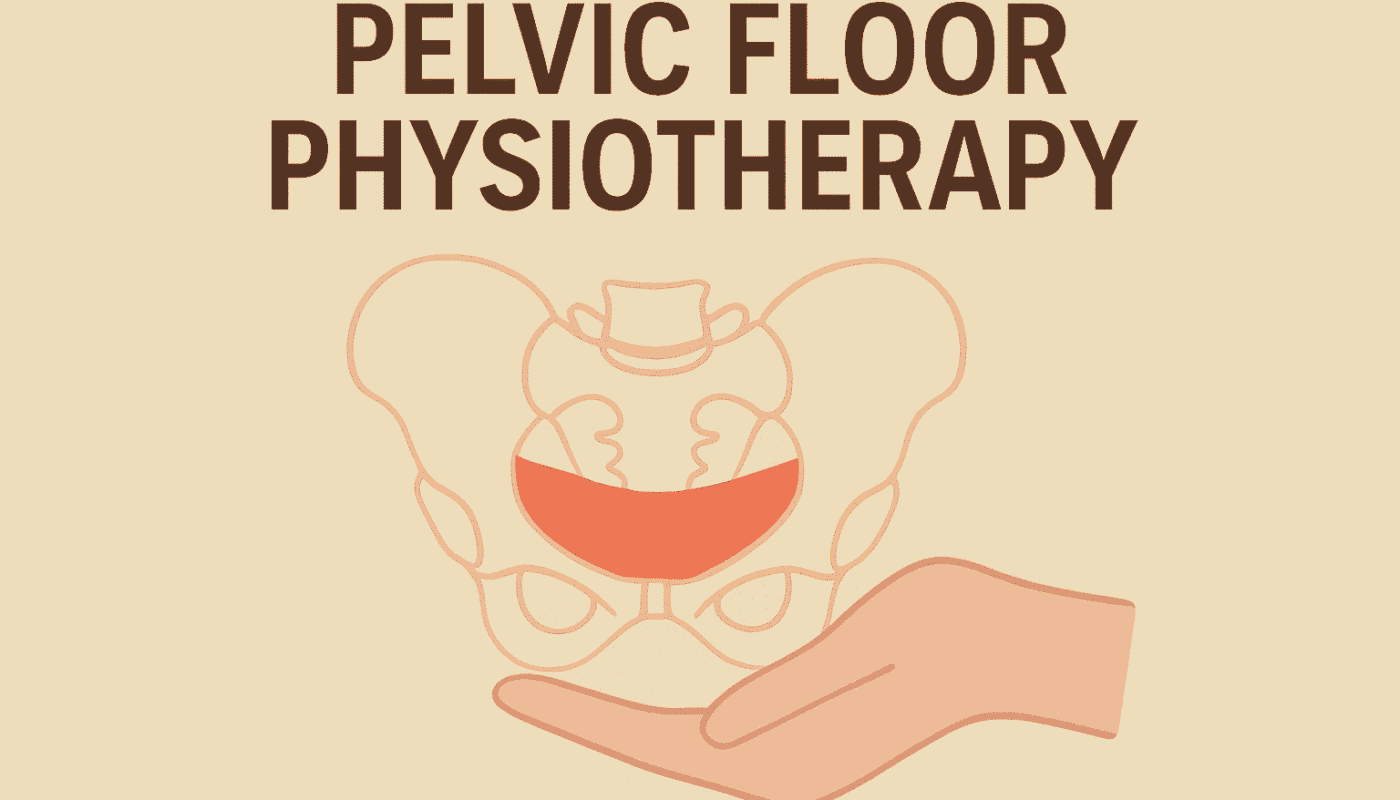The pelvic floor is a group of muscles most people rarely think about—until something goes wrong. These muscles sit at the base of the pelvis, supporting the bladder, bowel, and in women, the uterus. When the pelvic floor isn’t working well, it can lead to problems like leakage, pain, or difficulty with everyday activities.
Physiotherapy can play a key role in restoring pelvic floor function. By learning how to use and strengthen these muscles correctly, many people find relief and regain confidence in daily life. This article explains what the pelvic floor does, common issues, and how physiotherapy can help.
What Is the Pelvic Floor?
The pelvic floor is like a hammock of muscles and tissues stretching from the pubic bone at the front to the tailbone at the back. It supports important organs and helps control bladder and bowel movements.
These muscles also play a role in sexual function, posture, and even breathing. Because they connect with the deep core muscles, the pelvic floor works closely with the abdomen and lower back.
Why Pelvic Floor Health Matters
When the pelvic floor is strong and coordinated, it supports normal daily activities without discomfort. But when it becomes weak, overactive, or uncoordinated, problems can appear. These may include:
-
Urinary leakage (incontinence) when coughing, sneezing, or exercising.
-
Bowel control problems such as urgency or leakage.
-
Pelvic organ prolapse, where the bladder, uterus, or bowel drop into the vaginal canal.
-
Pelvic pain, often linked with muscle tension or scar tissue.
-
Sexual difficulties, such as pain or reduced sensation.
These issues can affect men and women, though women often notice them after pregnancy, childbirth, or menopause.
Common Causes of Pelvic Floor Problems
Pelvic floor issues can develop for many reasons:
-
Pregnancy and childbirth: Carrying a baby and vaginal delivery stretch the pelvic floor.
-
Menopause: Lower estrogen levels affect muscle and tissue strength.
-
Surgery: Prostate surgery in men or pelvic surgery in women can weaken support.
-
Heavy lifting: Jobs or exercise that strain the abdomen can overload the pelvic floor.
-
Chronic coughing or constipation: Both increase pressure on the pelvic muscles.
-
Lifestyle factors: Obesity, low activity levels, and poor posture also contribute.
How Physiotherapy Helps
Pelvic floor physiotherapy is a specialised area focusing on assessment and rehabilitation of these muscles. The approach is gentle and tailored to each person.
Assessment
A physiotherapist may use a mix of questions, observation, and sometimes internal examination to understand how the pelvic floor is functioning.
Education
Understanding how the pelvic floor works is the first step. Many people are surprised to learn they’ve been doing “pelvic floor exercises” incorrectly.
Pelvic Floor Exercises
Often called Kegels, these exercises involve tightening and relaxing the pelvic muscles. Physiotherapists teach the correct technique, ensuring the right muscles are activated without holding the breath or tightening the abdomen too much.
Relaxation Training
Some people have an overactive pelvic floor. In this case, therapy focuses on relaxation, breathing, and gentle stretching instead of strengthening.
Core and Posture Work
Because the pelvic floor connects with the core and spine, physiotherapy also addresses posture, breathing, and abdominal strength.
Lifestyle Advice
Simple changes—like managing constipation, lifting correctly, or adjusting exercise routines—support recovery.
Everyday Habits That Support Pelvic Floor Health
Along with therapy, daily habits can protect the pelvic floor:
-
Drink enough water but avoid excessive caffeine.
-
Go to the toilet only when you need to, not “just in case.”
-
Breathe out while lifting to avoid straining.
-
Stay active with low-impact exercises like walking, swimming, or yoga.
-
Maintain a healthy weight to reduce pressure on the pelvic muscles.
The Emotional Side
Pelvic floor problems can feel embarrassing, which makes many people delay seeking help. But ignoring symptoms often makes them worse. Physiotherapy offers a private, supportive space to talk openly and find solutions. Restoring pelvic floor health often improves not just physical comfort but also confidence, intimacy, and quality of life.
Recovery Rehab Physiotherapy’s Approach
At Recovery Rehab in Westmead, pelvic floor care is guided by respect, privacy, and evidence-based practice. Each person’s story is different. Some come after childbirth, others after surgery, and some simply want to prevent problems as they age.
Therapy usually begins with education and gentle training, then moves into practical exercises and daily strategies. The goal is always to improve function and independence, not just treat symptoms.
When to Seek Help
Consider booking an appointment if you notice:
-
Leakage when sneezing, coughing, or exercising.
-
Needing to rush to the toilet often.
-
A heavy or dragging feeling in the pelvis.
-
Pain in the pelvic region or during intimacy.
-
Difficulty controlling wind or bowel movements.
Early intervention usually leads to better results.
Final Thoughts
Pelvic floor health is an important but often overlooked part of overall wellbeing. Problems in this area can be distressing, but they are also common—and treatable. Physiotherapy provides safe, practical ways to restore strength, coordination, and comfort.
Taking care of the pelvic floor isn’t just about fixing issues when they appear. It’s also about preventing problems, staying active, and maintaining confidence throughout life.








